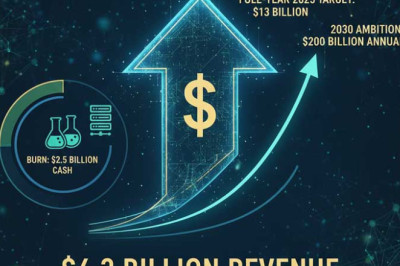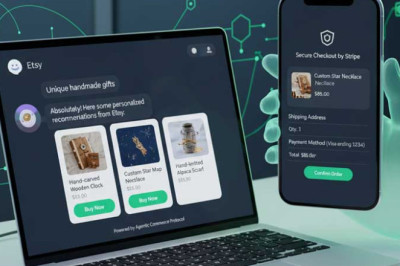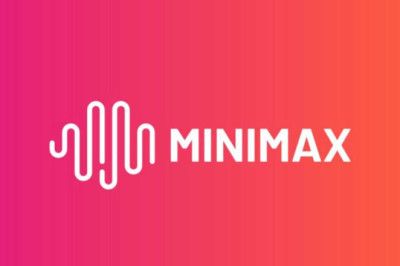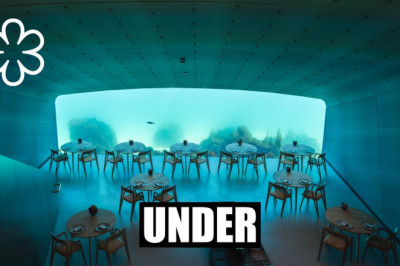
views
7 Hard-to-Swallow Lessons From My $90,000 Year of Freelancing | by Carter Kilmann | Jan, 2023 | Entrepreneur's Handbook
7 Hard-to-Swallow Lessons From My $90,000 Year of FreelancingDon’t glamorize the future.Created on Canva
I began freelancing full-time in July 2019. Here’s a breakdown of my annual earnings since then.
Adjusting for holidays and vacation, a normal month of work yielded about $9,000 last year. Allow me to toot my own horn for a second — I’m pretty damn proud of that.
By the most coveted metric (income), I’ve “made it.” Or, I’m financially stable at least. That said, if I could condense everything I’ve learned into an oversimplified lesson, it’s this: don’t glamorize the future.
Here are a few potentially hard-to-swallow lessons I’ve learned from building a (nearly) six-figure writing business.
Problem number one when I began my freelancing career: make money.
Translation: find clients willing to pay me for a service I was relatively inexperienced in providing. After three and a half years and hundreds of assignments, I don’t have that problem anymore. But steady income doesn’t mean I can turn on cruise control and just vibe.
Other problems have sprouted as I’ve evolved my business.
For instance, it’s great to have a longer client list, but I don’t have the same cushion for procrastination that I once unwittingly had, which means I need to operate with urgency and avoid distractions. It’s a different kind of stress.
Raising rates is another example. Money is an awkward subject as it is. Asking clients for more money for the same services? It almost feels wrong.
With plenty of “uncomfortable” conversations under my belt, I feel confident and justified in charging higher rates, but still — negotiating is a delicate challenge that has backfired on me before.
Maybe this is just my opinion, but compared to building a six-figure freelancing business, I think it’s a much more daunting task to build an audience and then develop and sell compelling products. I’ve seen others succeed in the creative arena, but the dedication it takes to gut out months of negligible sales and unlivable earnings? Sheesh, that’s tough.
I’d love for my personal projects to sustain me financially, but I barely earn enough from Medium and book sales each month to cover my internet bill. (My other creative endeavors don’t even generate revenue.)
Am I happier than when I was in banking? Yes.
Am I happier than when I first started freelancing and lived invoice to invoice? Marginally.
While I am far closer to being satisfied and fulfilled by my work, it may very well be an endless pursuit. I’ve learned that it’s more valuable to enjoy the process.
When I first transitioned to freelancing full-time, I cut my monthly budget by 32%. I had to — I didn’t make enough money to continue my previous lifestyle.
And I attribute my current success to that frugal decision because, otherwise, who knows if I would have lasted long enough to experience that sudden hockey stick revenue growth.
Plus, it helped instill good habits. Three and a half years later, I’m still pretty damn close to following my self-imposed spending limit; with the exception of higher rent (somewhat outside of my control), my expenses haven’t really changed.
Your rates are your rates, but someone has to be willing to pay them. Every time you bump your price, you drain a little water from the pool of potential clients. In my opinion, it’s far easier to increase profits by outsourcing and focusing on implied hourly rates. Your time is your most valuable currency.
Of course, finding reliable freelancers is easier said than done. But that’s all the more reason to network with other freelancers. You never know, you may find a go-to person whose rates fit within a client’s budget and still allow you to generate some semi-passive income.
I like the ass-to-the-fire approach. That’s what freelancing is at the end of the day: we’re directly and solely responsible for sustaining ourselves financially. If we don’t work, we don’t earn.
That said, it’s just as easy for me to procrastinate today as it was three years ago. The difference is that I know my triggers — my phone (which needs to either be on do-not-disturb or out of my reach), heavy foods, and noise.
Freelancing is such a volatile line of work that it’s hard to feel like we’re progressing.
In the fall of 2020, I landed a couple of high-paying copywriting gigs, which helped me surpass my monthly banking income back when I was a corproate drone. I remember thinking, “I did it, I finally turned the corner.”
And then they ghosted me.
One company pivoted and fired my primary points of contact (I only found out after messaging them on LinkedIn two months later). The other cut ties with their freelancers and hired an in-house team (same as before, I only learned this by proactively asking around on LinkedIn).
At the time, I was crushed. My earnings plummeted, and I reverted to living invoice to invoice.
But, looking back, it was still progress — I had new pieces for my portfolio that I would eventually leverage to land even better clients.
Metaphorically speaking, you have to ride an elevator into the clouds, look at your business from a 30,000-foot perspective, and ask a simple yet salient question: am I closer to my goals than when I started?
It may not seem like it, but progress is happening.




















Comments
0 comment